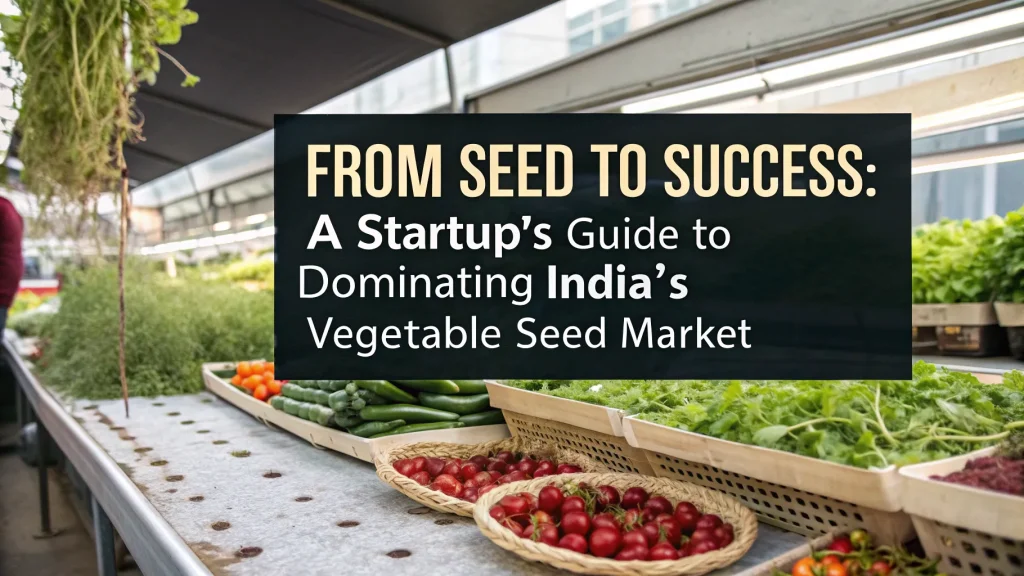Hydroponic Greenhouse Farming is rapidly gaining popularity in India and around the world as a sustainable and high-yield agricultural method. It allows farmers to grow crops without soil by using mineral-rich nutrient solutions in a controlled environment. This modern method of farming is ideal for urban and peri-urban areas where land is limited but the demand for fresh vegetables and herbs is continuously increasing. The combination of hydroponics with greenhouse technology ensures efficient use of water, space, and other resources while ensuring year-round crop production.
See Also: Food Packaging Business
Why Hydroponic Greenhouse Farming Is the Future of Agriculture
In traditional farming, soil quality, climate unpredictability, and pest infestations often hinder productivity. However, hydroponic greenhouse farming offers a controlled setup where crops grow faster and are less susceptible to environmental hazards. This system enables farmers to control humidity, light, temperature, and nutrients precisely, resulting in higher yields and better crop quality.
The growing concern over pesticide use, soil degradation, and water scarcity has led to the rise of alternative farming techniques. Among these, hydroponic greenhouse farming stands out for its minimal water usage—up to 90% less than soil-based farming—and its ability to yield 3 to 10 times more crops in the same space. Additionally, hydroponics uses vertical space efficiently, which is a boon for farmers in urban settings.
Business Model and Setup
To start a hydroponic greenhouse farming business, one needs a well-structured business model that covers land acquisition or leasing, infrastructure setup, nutrient solution systems, automation tools, and expert consultancy. The primary components include:
-
Polyhouse or Greenhouse structure with climate control systems
-
Hydroponic system types (NFT, DWC, drip irrigation, etc.)
-
Water pumps and storage
-
Nutrient mixing tanks and dosing systems
-
LED grow lights (if indoor)
-
Crops like lettuce, spinach, strawberries, tomatoes, herbs, etc.
Choosing the right hydroponic system is critical. Nutrient Film Technique (NFT) and Deep Water Culture (DWC) are popular for leafy greens, while Dutch bucket systems are better suited for vine crops like tomatoes and cucumbers.
Investment Breakdown
The investment required for hydroponic greenhouse farming depends on the size, type of crops, automation level, and location. Here’s a general breakdown for a 1,000 sq. meter (quarter-acre) setup:
| Component | Estimated Cost (INR) |
|---|---|
| Polyhouse/Greenhouse Structure | ?8,00,000 – ?12,00,000 |
| Hydroponic Systems & Equipment | ?6,00,000 – ?10,00,000 |
| Water System & Nutrients | ?2,00,000 – ?3,00,000 |
| Climate Control, Sensors, Software | ?2,00,000 – ?4,00,000 |
| Labor, Training & Misc. | ?1,00,000 – ?2,00,000 |
| Total Investment | ?19,00,000 – ?31,00,000 |
Subsidies from state governments and schemes under the National Horticulture Mission (NHM) or MIDH (Mission for Integrated Development of Horticulture) can reduce initial costs by up to 50% for eligible entrepreneurs.
Revenue Potential
The revenue in hydroponic greenhouse farming depends on the crop selection, market linkage, and production cycles. A 1,000 sq. meter setup can produce approximately:
-
Lettuce: 3,500 kg per cycle (45–60 days)
-
Spinach: 3,000 kg per cycle (30–40 days)
-
Tomatoes: 2,500 kg per cycle (90–100 days)
-
Herbs (basil, mint): 1,500–2,000 kg per cycle
With proper planning, 6–8 production cycles are possible annually. At an average wholesale price of ?100–?150 per kg for high-quality hydroponic produce, the gross annual revenue can range between ?20 lakh to ?35 lakh.
Subtracting the operational expenses (seeds, nutrients, electricity, labor), which can range from ?4 lakh to ?6 lakh annually, the net profit from hydroponic greenhouse farming can go up to ?15 lakh per year.
Marketing and Sales Channels
For success in this business, establishing reliable sales channels is essential. Target markets include:
-
Organic stores and supermarkets
-
Farm-to-fork models (online platforms)
-
Direct-to-consumer (D2C) deliveries
-
Restaurant and hotel supply chains
-
Weekly farmer markets and wellness stores
Branding the produce as “pesticide-free”, “nutrient-rich”, and “locally grown” also adds value and helps in commanding premium prices.
Operational Challenges
While hydroponic greenhouse farming is a high-potential business, it comes with its own set of challenges:
-
Technical expertise is a must for managing nutrient balance, pest control, and equipment maintenance.
-
Power dependency is high due to pumps, cooling systems, and lighting.
-
Initial investment is significant compared to conventional farming.
-
Marketing education is required to convince consumers of the value of hydroponic produce.
-
Water quality must be monitored consistently to avoid mineral imbalance and crop failure.
Fortunately, these challenges can be mitigated by hiring consultants, using IoT-enabled devices, and automating key processes. Online training and government-backed workshops are also helpful for new entrepreneurs.
Future Scope and Trends
India’s hydroponic greenhouse farming market is expected to grow rapidly, driven by urbanization, dietary shifts, and rising health consciousness. According to market analysts, the sector could grow at a CAGR of 13–15% over the next five years.
Key future trends include:
-
AI-driven farm management software to optimize yields
-
Use of blockchain for transparent farm-to-fork traceability
-
Export potential to Gulf countries and Southeast Asia
-
Collaborations with food delivery platforms and D2C brands
-
Vertical farming integration with hydroponics for dense urban regions
Also, many startups and agritech ventures are actively exploring this space, making hydroponic greenhouse farming a hotbed for innovation and entrepreneurship.
See Also: Bread Making Business
Conclusion
Hydroponic Greenhouse Farming is more than just a modern farming technique—it’s a scalable business model that combines science, sustainability, and profitability. With rising awareness of food quality and resource conservation, this method is quickly becoming the go-to solution for progressive farmers and agripreneurs. While the initial investment may seem steep, the high returns, consistent year-round output, and environmental benefits make it a worthy venture.
With the right planning, technical know-how, and market strategy, hydroponic greenhouse farming can transform small and mid-sized entrepreneurs into leaders in India’s next agricultural revolution.





